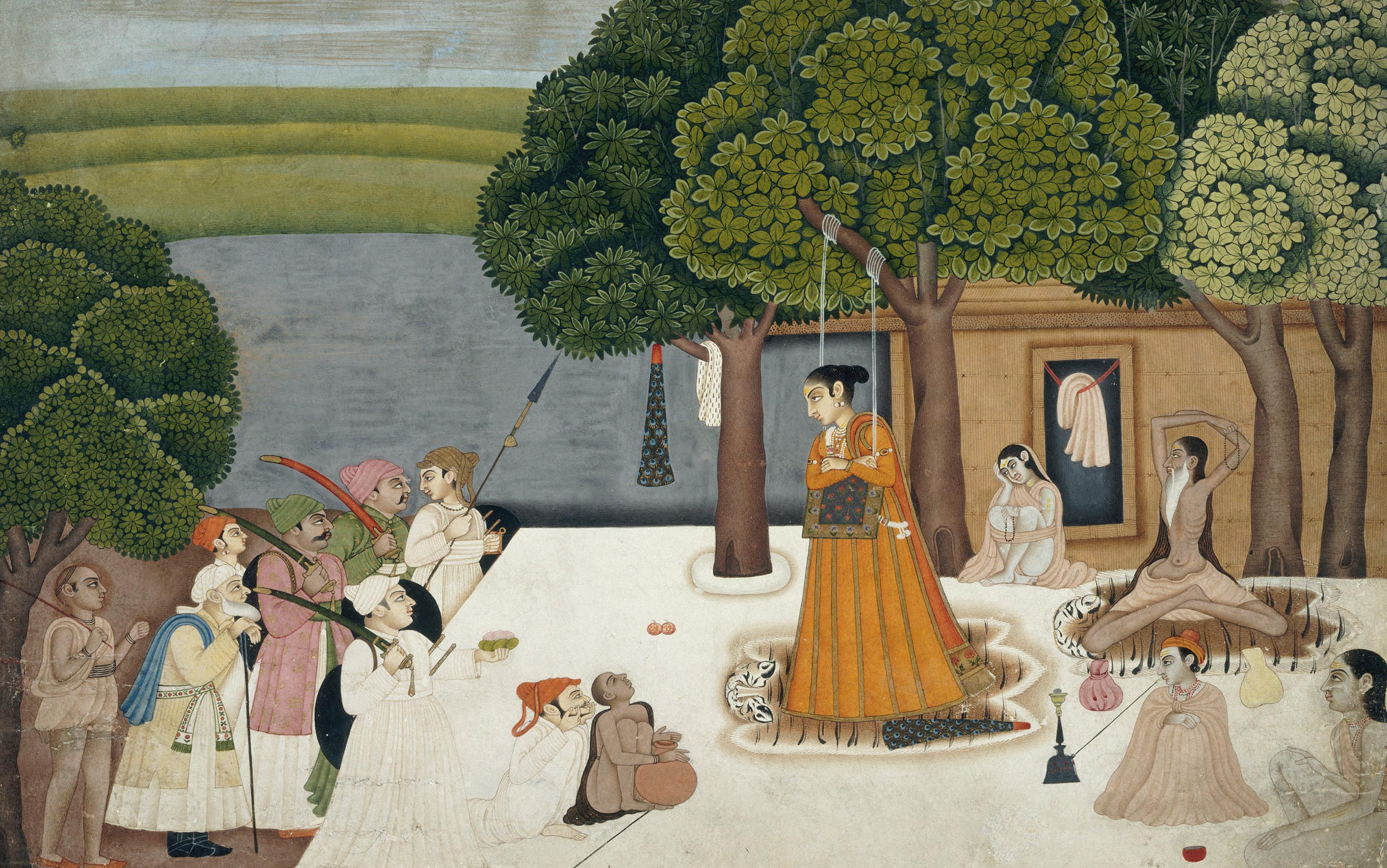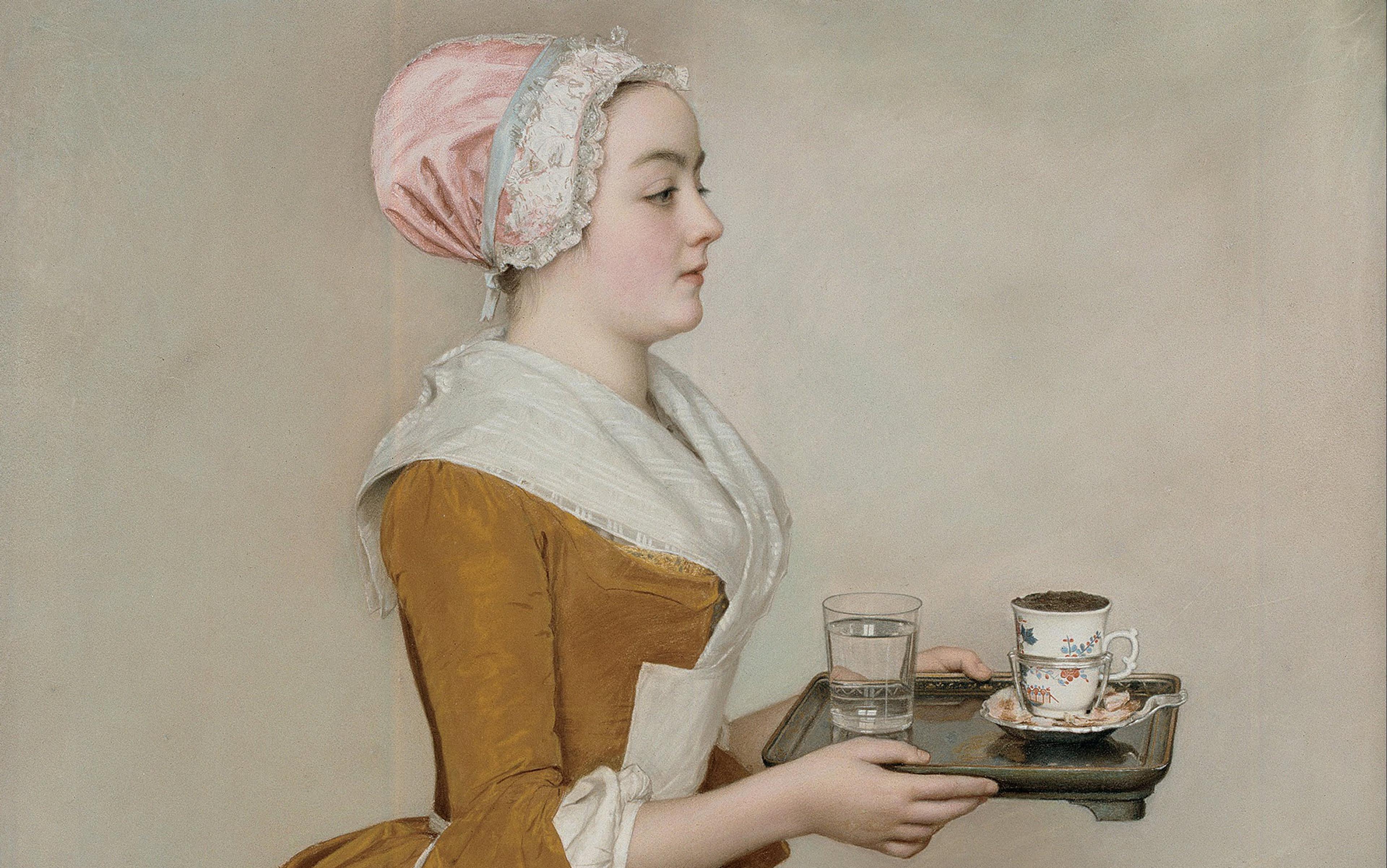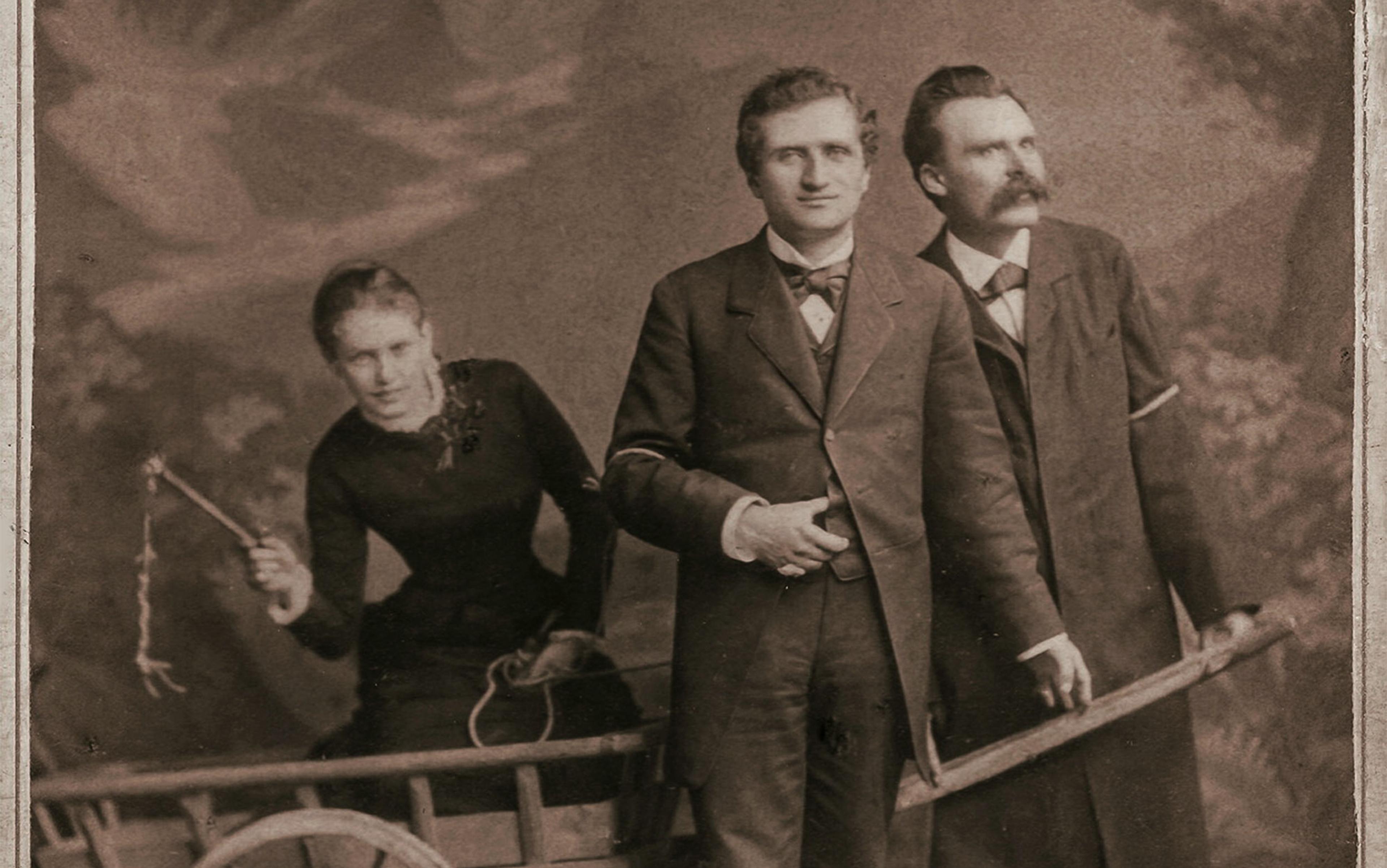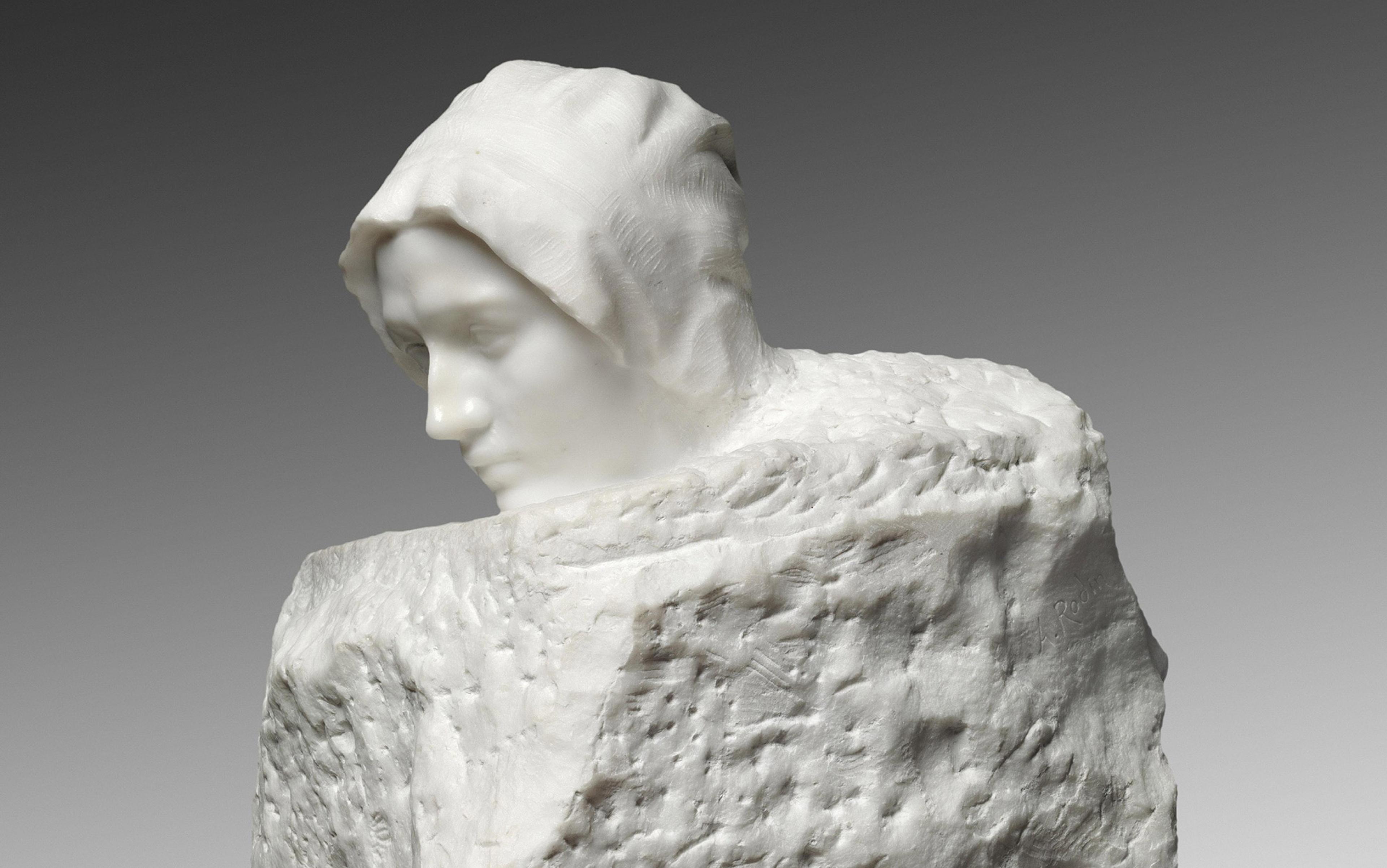On 6 April 1667, a powerful earthquake devastated Dubrovnik, claiming at least 3,000 lives and destroying most of the city’s buildings. Among the many losses were irreplaceable cultural treasures – thousands of books, manuscripts and archival materials. The Rector’s Palace, housing state records, was heavily damaged, and fires that followed the quake consumed much of what remained. Monastic libraries, particularly those of the Dominican and Franciscan friars, suffered great losses. Nobles also lost private collections as their residences collapsed.
The disaster not only marked a turning point in the city’s urban and political history but also inflicted a deep scar on its intellectual heritage. If it were not for this earthquake, we would know more about a fascinating imbroglio that involved philosophy, politics and gender that happened in the 1580s and involved the city’s foremost noble families. Nevertheless, it’s still possible to piece together parts of the jigsaw from what has survived. What emerges reveals two remarkable women who dared to challenge the patriarchy using philosophical arguments in an age when such attempts could be counted on one hand.
By the end of the 16th century, Dubrovnik boasted paved streets, an advanced sewage system, and a reliable water supply, innovations that placed it ahead of many other Adriatic ports in both functionality and sophistication. Its grand celebrations of St Blaise, the city’s patron saint, epitomised Dubrovnik’s cultural vibrancy, featuring theatrical performances, banquets, and public festivities that showcased its wealth and organisational prowess. To the outside world, the Republic of Dubrovnik projected an image of modernity and sovereignty, underpinned by well-defined laws, respected judicial institutions, and formidable fortifications that symbolised its enduring strength. The Republic of Ragusa, as it was known in Italian and Latin, thrived as a maritime power and intellectual crossroads, blending Italian humanism, Croatian (Slavic) traditions and Ottoman influences. Its aristocracy cultivated a reputation for erudition, with towering figures like the acclaimed national poet Ivan Gundulić, the earlier-generation Renaissance playwright Marin Držić, and the scientist Marin Getaldić shaping its intellectual identity.
The nobility’s commercial acumen fuelled Dubrovnik’s prosperity. Patrician families invested in salt production, textile exports, silver and shipbuilding, leveraging their Ottoman trade capitulations to dominate overland Balkan routes as well as maritime liaison with Italy and beyond the Adriatic. This economic success funded public works, including the mid-15th-century aqueduct by Onofrio della Cava and the lazaretto quarantine system, which safeguarded the city from epidemics. Socially, the Republic enforced strict hierarchies: interclass marriages were discouraged by law, and sumptuary laws regulated dress to reinforce aristocratic prestige. Yet these measures coexisted with progressive policies, such as the abolition of slave-trade in 1416 (the law called it ‘shameful, evil, inhuman, and against all civility’) and the establishment of one of Europe’s oldest pharmacies in 1317, reflecting a blend of mercantile pragmatism and Renaissance humanism.
During the Renaissance, Dubrovnik emerged as a vital meeting point between East and West, uniquely blending Western Christian and Eastern Byzantine, and later Ottoman, influences in its culture, politics and trade. Its strategic location on the Adriatic made it the most important port of the Eastern Adriatic and a key mercantile and diplomatic intermediary between the Balkan hinterland and the Mediterranean world. In the 15th century, Dubrovnik became one of Venice’s main rivals, leveraging its exceptional diplomacy and trade networks to compete with the Venetian Republic, while maintaining independence through skilful negotiation with both Western and Eastern powers, including the Ottoman Empire.

Dubrovnik depicted in 1486, from Konrad Grünenberg’s Beschreibung der Reise von Konstanz nach Jerusalem. Courtesy the Baden State Library
In the sun-drenched marble streets of late 16th-century Dubrovnik, an extraordinary intellectual rebellion was quietly unfolding. At its centre was Maruša Gundulić aka Maria Gondola (c1557-post 1599), a noblewoman whose writings defied the rigid gender norms of her time. (Croatian Renaissance authors often adopted Italian or Latinised versions of their names due to the cultural, intellectual, and political dynamics of the era. Latin served as the lingua franca of European scholarship, philosophy and theological discourse, necessitating its use for broader academic recognition and integration into pan-European humanist circles. Additionally, Venetian – ie, Italian – political and cultural influence in Dalmatia, where many Croatian authors resided, made Italian a dominant administrative and literary language, further encouraging bilingual or hybrid identities.)
By her reaction to a particular personal situation, Gundulić laid the groundwork for one of the earliest feminist manifestos in the Adriatic world. Long overshadowed by her husband, the statesman and philosopher Nikola Gučetić, aka Nicolò Vito di Gozze/Nicolaus Viti Gozzius (1549-1610), Gundulić’s legacy has only recently been reclaimed by scholars and she has been revealed to be a thinker whose ideas about gender and power resonate with startling modernity.
Born into the influential aristocratic Gundulić family, Maruša married Nikola Gučetić in 1575. This marriage date remains the only confirmed biographical information available about her. Based on the customary marriage age of 18 for women during that period, scholars conjecture that she was born around 1557. Gučetić was also a member of one of the most prominent of Dubrovnik’s Golden Age nobility and was himself a polymath. His marriage to Maruša Gundulić, scion of an aristocratic dynasty, further strengthened his position within Dubrovnik’s ruling oligarchy.
Unlike many contemporaries who sought education in Padua or Bologna, Gučetić’s humanist training unfolded largely within Dubrovnik’s city walls, though his one visit to Rome exposed him to burgeoning Renaissance intellectual exchanges. Apart from a number of published works in Italian and Latin, towards the end of his life he sent his unpublished manuscripts to the Duke Francesco Maria II della Rovere of Urbino, where they were kept and later transferred to the Vatican Library, where they are, with exception of one codex, still kept as a part of the Urbinate collection. Gučetić came into contact with the duke as a foreign dignitary who might sway the Ragusan dignitary to suspend the capital punishment on an exiled Ragusan nobleman called Marin Andrijin Bobaljević, aka Marino d’Andrea Bobali (c1555-1605). Bobaljević had assassinated his political opponent, the diplomat Fran Gundulić, aka Francesco Gondola (1538-89), who was a cousin of Gučetić’s. It is hard to imagine Gundulić’s perspective in this affair, where her loving husband took action on behalf of her distinguished cousin’s murderer. (Special thanks to Pavel Gregorić for this addendum.)
This epithet stylised her as both a fragile muse and a symbol of resilience
Gučetić’s dual identity as a city administrator and a philosopher found expression in his vast family library, a treasure trove of Latin and Italian manuscripts that rivalled those of Mediterranean intellectual hubs. His intellectual allegiances were diverse: while championing some Neoplatonic aesthetics, he espoused Aristotelian practical philosophy and metaphysics, openly advocating Averroist interpretations, all the while insisting on his Christian faith and displaying vast theological learning. His learned eclectic approach is emblematic of Renaissance thought in general – an approach reflected in the Republic of Dubrovnik itself, which balanced humanist ideals with oligarchic pragmatism until Napoleon’s 1808 dissolution. Gučetić’s death in 1610 marked the twilight of Dubrovnik’s intellectual zenith.
If Maruša Gundulić is the protagonist, the deuteragonist (the second main character) in this story is her close friend, Cvijeta Zuzorić. Born in Dubrovnik around 1552, Zuzorić died aged 96 in Ancona, Italy, in 1648, and was known in Italian as Flora or Fiora Zuzzori/Zuzzeri. She was a celebrated poet and intellectual, renowned for her beauty, erudition and significant cultural influence during the city’s Renaissance. Educated in Ancona, she mastered Italian and likely Latin, and was admired for her wit and literary talent, though none of her own writings have survived. She inspired numerous poets from Dubrovnik and Italy, most notably Torquato Tasso, who dedicated three sonnets and five madrigals to Zuzorić. In these works, Tasso crafted a poetic pseudonym for her, Fiordispina (‘flower of thorns’), a name that fused her given name (cvijeta, meaning ‘flower’ in Croatian) with the Italian spina (‘thorn’) to evoke her paradoxical allure. This epithet stylised her as both a fragile muse and a symbol of resilience, embodying the tensions between cultural refinement and intellectual fortitude that defined her legacy across Adriatic humanist circles.
In 1584, Zuzorić became embroiled in a public scandal. There are several theories about the exact nature of the Dubrovnik nobility’s anger towards her. Some claim it was envy and, perhaps, jealousy, some moral consternation over the ‘alternative lifestyle’ of the intellectual circle around Gučetić. However, the majority of scholars mention financial troubles: her husband, Bartolomeo Pescioni – the Florentine consul in Dubrovnik – had accumulated significant debts, jeopardising both her substantial dowry and her social standing. Understandably, Zuzorić might have sought to protect her share of the marital assets. Her liberal education and relative emancipation, demonstrated by her efforts to defend her interests independently of her husband, were viewed as excessive by the conservative Dubrovnik elite. The city’s patrician society seized upon the crisis to vilify Zuzorić, attacking her character and dismissing her intellectual pursuits as frivolous – and perhaps even dangerous.
However, an unexpected act of solidarity followed. Maruša Gundulić responded with a bold gesture: she authored a dedicatory letter defending Zuzorić, published as the preface to her husband’s philosophical treatise, Discorsi sopra le Metheore d’Aristotele (1584), or Discourses on Aristotle’s Meteorology, a commentary set in dialogue form. After the first edition of this book was banned, she rewrote and republished her dedicatory letter for the second edition in 1585. Both editions were written in Italian. This is today recognised as the first philosophical text authored by a Croatian woman and a landmark in the history of feminist thought in the region. It deserves to be better known.

Title page of Discorsi sopra le Metheore d’Aristotele (1584). Public domain

Opening page of Maruša Gundulić’s letter. Pubic domain

Maruša Gundulić (in Italian, Maria Gondola) signs off. Public domain
Gundulić’s dedicatory letter operates on multiple levels, blending personal loyalty with philosophical education. It opens as a heartfelt tribute to Zuzorić, praising her beauty, intellect and moral fortitude. This is a brave act of solidarity. Gundulić frames their bond as a meeting of equals, rooted in mutual respect and shared intellectual passion – a radical departure from the hierarchical relationships typically depicted in Renaissance literature.
She directly challenges Zuzorić’s detractors, decrying the ‘envious tongues’ and ‘dark places’ that systematically undermine women’s intellectual contributions. These critiques, she implies, manifest a pervasive societal anxiety toward female epistemological authority and moral autonomy, even superiority. In this gesture, the text’s most transformative dimension emerges through its subversion of the Aristotelian gender hierarchy – a framework that institutionalised women’s supposed moral, intellectual and biological inferiority to men.
(As a sobering historical note: one of Aristotle’s pivotal biological texts, the Generation of Animals, contains among the most problematic characterisations of femininity in classical philosophy. The text notoriously defines ‘the female is as it were a mutilated male’, framing this biological determinism through his theory of foetal development where females result from incomplete actualisation of male formative principles. Aristotle’s teleological framework positions women as physiologically colder, more humid and inherently passive – qualities he transposes into social hierarchies. In Politics, this bio-essentialism crystallises into explicit social stratification: ‘For the free rules the slave, the male the female, and the man the child …’ His virtue ethics further entrenches this dichotomy, asserting that ‘the temperance of a woman and that of a man are not the same, nor their courage and justice … the one is the courage of command, and the other that of subordination …’)
She appeals to ancient authorities to show that women not only could be but also were excellent
Gundulić’s counterargument harnesses contemporaneous medical discourses to posit that women possess ‘more refined senses’ and ‘more delicate constitutions’ than men, enabling them to acquire intellectual virtues more readily and thereby establishing women not merely as equals but as superiors in truth perception and virtue cultivation. This epistemological inversion – recasting traditionally cited biological limitations as cognitive advantages – prefigures modern feminist theories valorising situated knowledge and embodied cognition.
Furthermore, Gundulić advances several additional arguments asserting women’s superiority over men. She invokes a Platonic argument concerning the unity of virtues: since women’s beauty surpasses that of men, it follows that the beauty of their souls is likewise superior. She also presents an Aristotelian argument (as it were – against Aristotle!) based on the primacy of the final cause: if women are desired by men, and the final cause is superior to all others, then women must be superior to men. Finally, she offers an extensive list of outstanding women as real-life exemplars of her theses, employing an argumentum ex auctoritate to reinforce her claims – that is, appealing primarily to ancient authorities to show that women not only could be excellent, but also were excellent, and recognised as such.
Scholars have established that arguments in Gundulić’s dedicatory epistle were mostly compiled from other sources; similar reasoning can be traced back to the Sicilian Girolamo Camerata (1519-94) and the Spanish Antonio de Guevara (c1481-1545), and possibly also to the Neapolitan poet Jacopo Sannazaro (1458-1530), according to recent research by Francesca Maria Gabrielli. These connections place Gundulić within a broader intellectual tradition of querelle des femmes of the time. (The Renaissance querelle des femmes, or ‘the woman question’, was an intellectual and literary debate spanning the 15th to 17th centuries, mostly in Italy and France, in which humanists, theologians, and writers – including pioneering figures like Christine de Pizan and Isotta Nogarola – clashed over women’s societal roles, capabilities, and rights, employing classical texts, biblical exegesis and biographical exempla to challenge or reinforce gendered hierarchies while shaping early feminist thought.) However, Gundulić’s contribution extends beyond mere repetition of established arguments. Her defence transforms borrowed concepts into targeted advocacy addressing specific conditions faced by her contemporary, Zuzorić. And they gain special force by being openly delivered in her own female voice. This practical application distinguishes her work from purely theoretical predecessors. Gundulić’s defence transcends academic exercise, serving instead as pointed intervention in her immediate social context – she’s trying to do something with her words, not simply assert an intellectual position. This dual positioning creates both historical legitimacy and contemporary relevance.
Gundulić’s audacity did not go unopposed. Her dedicatory letter sparked immediate controversy, prompting unnamed Dubrovnik authorities to ban the first edition of Gučetić’s Discorsi prefaced by her controversial dedication letter. Whether the subsequent, abridged version resulted from direct censorship or self-censorship remains uncertain; what is clear is that the revision was intended to temper her pointed critique of prevailing social double standards. In this revised edition, the most provocative passages were removed, notably her metaphorical references to Dubrovnik’s ‘Wolves’, ‘Bears’ and ‘Tigers’ – thinly veiled criticisms of the city’s dominant aristocratic families. Nevertheless, Gundulić preserved her central arguments advocating for women’s intellectual superiority, signalling a pragmatic negotiation between her progressive ideals and the restrictive norms of her society. This episode underscores the persistent tension between Dubrovnik’s intellectual ambitions and its entrenched conservatism, positioning Gundulić as a pioneering – albeit constrained – voice in the early modern movement for the liberation of women.
The Gučetić-Gundulić couple’s decision to publish the dedicatory letter as a preface to an Aristotelian treatise was itself a masterstroke of subversion. By embedding feminist discourse within a male-authored academic text, they ensured its publication and survival while at the same time subtly legitimising Gundulić’s voice. That the letter survived, despite censorship, speaks to her strategic acumen in navigating the precarious terrain of 16th-century intellectual politics.
He effectively casts his wife in the role of Socrates within the text
However, there is more to Gundulić than ‘just’ this dedicatory letter. A few years before, in 1581, her husband had published two texts in Italian: Dialogue on Beauty and Dialogue on Love. These works are exceptional for several reasons. For us, the most important is that the interlocutors are two women – no men speak. This makes them almost unique: it was exceedingly rare in Renaissance dialogue literature to feature exclusively female speakers. (Besides Christine de Pizan’s Le Livre de la Cité des Dames, or The Book of the City of Ladies, from 1405, which is more of a catalogue of famous women throughout history, another notable example is Moderata Fonte’s Il merito delle donne, or The Worth of Women, published posthumously in 1600, in which seven Venetian women engage in philosophical discussion.) By placing women at the centre of philosophical enquiry, Gučetić’s dialogues not only challenged the conventions of the genre but also expanded the horizons of women’s intellectual agency in Renaissance thought. This rare configuration foregrounded female voices in a literary form traditionally dominated by men.
We may take the analysis a step further. Is this exception – of which Gučetić was clearly aware – indicative of a more substantial difference? Particularly intriguing in this context is the subtitle of the dialogues: he gave both the subtitle ‘Antos’. This term is derived from the Greek ἄνθος (‘flower’), which unmistakably alludes to Cvijeta Zuzorić: the dialogues bear her name as a subtitle. If we combine this with Gučetić’s explicit statement that these dialogues were written ‘in Platonic spirit’, we come to an interesting idea. As the titles of Plato’s dialogues typically reference the second interlocutor of the dialogue – the first one mostly being Socrates – this would position Zuzorić as the deuteragonist and, consequently, Gundulić as the protagonist, effectively casting her in the role of Socrates within the text.
Moreover, Gučetić’s preface to the Dialogue on Beauty (composed as a dedicatory letter to Zuzorić’s sister Nika) contains explicit statements indicating that these dialogues are not purely fictional constructs, nor solely the product of Gučetić’s mind, but in fact reflect or paraphrase actual conversations between his wife Gundulić and her friend Zuzorić, in some form. This perspective emerges from Gučetić’s parenthetical remark: ‘[This work is] not mine, but of your gracious Cvijeta’ and ‘these discussions that, some time ago, she [Zuzorić] had with my dear wife in our summer-house.’ This raises the question: who really was the author of the Dialogues?
We may adopt an approach from the history of philosophy that distinguishes between the ‘writer’ and the ‘author’, as exemplified in the tradition of Plato’s early, so-called Socratic dialogues. In these works, it’s often claimed, Plato’s literary genius preserved Socrates’ own ideas, in contrast to the ‘middle’ or ‘late’ dialogues, where Socrates becomes more a mouthpiece for Plato’s own philosophy. It is not necessary to assume that the historical Socrates was faithfully preserved in these texts or that he uttered precisely those words; rather, it suffices to suppose that most – or at least some core – ideas presented in the dialogues originated with Socrates himself. Applying this hermeneutic framework to Gučetić’s Dialogues opens the possibility that the philosophical arguments articulated by the characters Maruša Gundulić and Cvijeta Zuzorić may similarly derive from the historical figures themselves. This means that, while Gučetić is undeniably the writer and editor – explicitly credited on the title pages and confirmed through his dedicatory preface to Nika Zuzorić, the Dialogues represent an intellectual collaboration between Maruša Gundulić and Cvijeta Zuzorić: not just personae used by Gučetić but rather historical persons with their own philosophical ideas and elaborations, positions that they actually expressed.
Someone might object that Gučetić was simply being a gentleman, gallantly attributing his own ideas to his wife and her close friend. This, the argument goes, was a conventional feature of the genre – a kind of realistic framing that denies its fictional status, while itself constituting a literary construct, as seen in works like Jonathan Swift’s Gulliver’s Travels (1726). Indeed, we cannot know with absolute certainty whether Gundulić and Zuzorić actually met in the garden at Gučetić’s villa in Trsteno and engaged in discussions on love and beauty resembling those presented in the dialogues. However, to assume that such encounters were impossible is merely to perpetuate a prejudice that has long characterised much speculation within the history of philosophy.
Female characters are positioned as equal interlocutors rather than passive recipients of male wisdom
It is important to recall that some aspects of philosophy have historically been misogynistic. This is evident in the blatant exclusion of women from the philosophical canon, as well as in the openly misogynistic claims scattered throughout the works of some major figures such as Aristotle, Jean-Jacques Rousseau and Arthur Schopenhauer. Part of this attitude is a persistent reluctance to recognise women authors as philosophers on par with their male interlocutors – a tendency that persists even in contemporary scholarship. For example, in Plato’s Symposium, one of the principal speeches on the nature of Eros is delivered by a woman named Diotima. Yet, in much of the secondary literature on this dialogue, it remains common to assert that Diotima is merely a metaphor – a complex literary device, a mask upon a mask upon a mask – typical of Plato’s literary artistry. Ultimately, this view holds that Diotima is not a real woman, but a fictional character invented (for reasons that are never entirely clear) to represent Plato’s or Socrates’ ideas. With few notable exceptions – such as Mary Ellen Waithe in A History of Women Philosophers (1989), and Armand D’Angour in Aeon – only a handful of scholars have dared to suggest that a real woman could have articulated such profound insights.
If we accept Gundulić’s authorship of the dedicatory letter as certain, there is no inherent reason to doubt her capacity for philosophical discourse at the level presented in her husband’s Dialogues. Moreover, the nuanced treatment of gender complementarity in the Dialogues – positioning female characters as equal interlocutors rather than passive recipients of male wisdom – gains particular significance when viewed through this lens of collaborative authorship, this particular philosophical triad: Gučetić-Gundulić-Zuzorić.
The story of Maruša Gundulić and Cvijeta Zuzorić is not one of unqualified triumph. Both women operated within the strictures of censorship, societal expectations and the overshadowing authority of their husbands, which inevitably circumscribed their public influence. Yet, within these confines, Gundulić, through her dedicatory letter, articulated a feminist philosophy that transcended her immediate context. Her insistence on women’s intellectual equality and even superiority, her critique of patriarchal structures, and her vision of female solidarity anticipate themes central to modern feminist thought. Today, as scholars continue to recover marginalised voices, Gundulić’s legacy compels us to reconsider the boundaries of the philosophical canon. The ongoing scholarly project is to piece together, from scattered traces and indirect testimonies, the original philosophical perspectives of Gundulić and Zuzorić – restoring them to their rightful place in the intellectual history of Renaissance Europe. As Waithe wrote about women philosophers: ‘these women are not women on the fringes of philosophy, but philosophers on the fringes of history. It is our pleasure to introduce you to them.’






